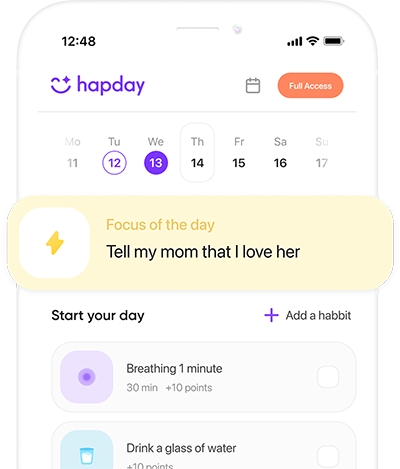Understanding how to heal from childhood trauma is quite the journey, isn’t it? Often requiring a patchwork of approaches—almost like piecing together a quilt. Among the many tools available, there’s this intriguing concept of love languages, which opens up new pathways to emotional healing. Back in the day, Gary Chapman gave us the classic five love languages through his famous book, but let’s not stop there. Peeling back the layers, we’ll explore seven love languages that are particularly useful in healing the wounds of childhood trauma.
Table of Contents
- What are Love Languages?
- Understanding Childhood Trauma
- The Importance of Love in Healing
- Love Languages and Their Role in Healing Trauma
- Integrating Love Languages in Therapeutic Practices
- Conclusion
What are Love Languages?
So, what are these love languages? Essentially, they’re about the different ways folks express and receive love, which can drastically improve relationships. I mean, who wouldn’t want to know how their partner likes to be loved, right? The original list had five:
- Words of affirmation
- Acts of service
- Receiving gifts
- Quality time
- Physical touch
To better address the complex needs resulting from childhood trauma, we’ve stretched this list to include two more:
- Creative expression
- Personal space
These new additions? They’re the unsung heroes addressing needs often ignored by the usual methods.
Understanding Childhood Trauma
Before we dive into how to heal, let’s chat about what childhood trauma actually means. Childhood trauma involves distressing experiences during those tender years; everything from physical abuse to plain old neglect, even witnessing adult drama or emotional neglect. These early adversities can deeply affect someone’s psychological development—it’s like a shadow that follows into adulthood. According to the National Child Traumatic Stress Network, over 68% of kids encounter some form of trauma by 16. Can you believe that? And those early storms can later take shape as anxiety, depression, or relationship potholes.
The Importance of Love in Healing
Love, it turns out, is a powerful panacea in mending the scars of trauma. So many studies, like the one in the “Journal of Consulting and Clinical Psychology”, highlight how positive emotional connections can really lighten the heavy load of childhood trauma, promoting resilience and emotional balance. Seems knowing and using the right love languages helps build these heartening bonds and kickstart the long healing process. Who knew?
Love Languages and Their Role in Healing Trauma
1. Words of Affirmation
Words of affirmation—just like magic—are used to express love through verbal niceties. For those scarred by childhood trauma, uplifting words can challenge those pesky negative thoughts and boost self-esteem.
How to Use Words of Affirmation
- Positive Reinforcement: Compliments and praise work great here. Give a nod to their efforts and triumphs, and their self-worth gets a real pick-me-up.
- Reassurance: Be a constant source of love and support, especially when they’re having a rough day.
- Encouragement: Speak empowering words, instilling them with confidence and strength to believe they can tackle anything.
Scientific Insight: Would you be surprised to learn that “Psychological Science” found that verbal affirmations spark up brain regions related to self-worth and value? Pretty neat how it helps reshape those negative thoughts.
2. Acts of Service
Acts of service are about expressing love through thoughtful actions. For someone with past neglect, these deeds remind them that they matter.
Implementing Acts of Service
- Consistency: Even minor gestures of kindness show reliability, crucial for trauma survivors who’ve known neglect.
- Support: Lend a hand with daily chores to ease their burden, demonstrating your commitment to their wellness.
- Intentionality: Participate in activities meaningful to them, showing them your relationship runs deep.
Research Basis: The “Journal of Marriage and Family” highlights how steady acts of service can build feelings of security and attachment—essential for trauma healing.
3. Receiving Gifts
Receiving gifts isn’t about becoming materialistic; it’s the thought and effort behind it that counts. For someone who’s felt invisible, receiving a meaningful gift can remind them they’re valued.
Practical Application of Receiving Gifts
- Personalized Tokens: Choose gifts that resonate with their tastes and needs, showing you truly understand them.
- Surprises: Surprise them with thoughtful gifts, reinforcing the sentiment that they are cherished, come rain or shine.
- Symbolic Gifts: Offer items representing milestones in their healing journey, adding depth to the gift.
Study Insight: According to “Consumer Behavior”, meaningful gifts weave tighter bonds, boosting emotional well-being.
4. Quality Time
Quality time is all about giving undivided attention. For those who felt invisible growing up, quality time can help reset feelings of self-worth.
Enhancing Quality Time
- Active Listening: Get into the groove of truly engaging in conversations, validating their life stories and emotions.
- Shared Activities: Plan and enjoy activities together, making room for joyful memories and positive ties.
- Presence: Carve out time for one another, sans distractions, to underscore their significance in your life.
Empirical Evidence: “Developmental Psychology” illustrates that quality interactions can mend attachment issues and emotional outcomes from trauma.
5. Physical Touch
Physical touch can be a comforting avenue for healing. But, for those with trauma—it’s not a one-size-fits-all. Sensitivity and consent are paramount here.
Utilizing Physical Touch
- Boundaries: Respect personal boundaries. It’s crucial. Always ensure comfort and consent.
- Comforting Gestures: Gentle hugs or a squeeze of the hand can provide much-needed comfort.
- Therapeutic Touch: Try massages or guided touch therapies to relax and heal.
Research Findings: According to “Harvard Health”, touch has a magical way of melting stress and nurturing emotional healing for trauma survivors.
6. Creative Expression
Creative expression allows emotional articulation without words. It’s a love language shining for those who’ve got a hard time putting pain into words.
Fostering Creative Expression
- Art: Introduce drawing, painting, or other arty forms for expressing what words can’t capture.
- Writing: Journaling or creative writing—it’s like a personal therapist on paper.
- Music and Dance: Encourage them to dance or play music; it can be such a cathartic release.
Scientific Insight: The “American Journal of Public Health” shares how art therapy significantly trims down trauma symptoms, offering a creative lifeline.


This article beautifully highlights the importance of understanding love languages in the context of healing childhood trauma. It’s amazing how words of affirmation can shift someone’s self-perception! I’m curious, how can one effectively integrate these love languages into everyday interactions?
While I appreciate the concept of love languages, I wonder if they truly resonate with everyone. Not everyone may feel comfortable expressing or receiving love through physical touch or gifts. What are some alternative methods for those who might not connect with these languages?
That’s a great point! Some people might find solace in more personal gestures, like quality time or creative expression. It’s all about finding what works for the individual.
I get where you’re coming from, but maybe that’s where the beauty lies—in discovering your unique love language! Just because one method doesn’t work doesn’t mean they won’t find their path.
The idea that creative expression can be a healing tool is so powerful! It resonates deeply with me since I often find art to be therapeutic. Have there been studies specifically on how creative outlets affect trauma recovery?
‘Acts of Service’ really struck a chord with me. I think many people underestimate how much small acts can mean to someone who’s experienced trauma. It’s like saying ‘I care’ without needing words!
‘Receiving Gifts’ is often misinterpreted as materialism, but it’s so much deeper than that! A simple token can have profound meaning for someone who feels overlooked or undervalued.
‘Quality Time’—what a wonderful way to rebuild connections! It’s interesting to see how simply being present can help mend emotional wounds from childhood experiences.
‘Physical Touch’ definitely needs sensitivity and consent, especially for trauma survivors. It’s intriguing how something so simple could be both comforting and complex at the same time.
…and it’s essential to understand boundaries! Each person’s experience is unique; what comforts one may not work for another.
I absolutely love this article! It brings a fresh perspective on how to approach healing from childhood trauma. The idea of incorporating love languages into the healing process is brilliant and practical. I especially appreciate the addition of creative expression and personal space as love languages. They resonate deeply with me and remind us that healing isn’t one-size-fits-all. Thank you for sharing this insightful piece!
While I see the intent behind discussing love languages, I find it a bit superficial when addressing serious childhood trauma. The complexities of trauma cannot simply be resolved by understanding someone’s preferred way of receiving affection. It’s almost dismissive to suggest that these methods alone can heal deep-seated wounds. We need more comprehensive approaches than just nice words or gifts.
I understand where you’re coming from, GrumpyGus, but perhaps this approach offers a starting point for many who struggle with emotional connections due to their past experiences. It’s not about solving everything but providing tools for better relationships.
GrumpyGus, I think you may be overlooking how these concepts can complement other therapeutic practices rather than replace them entirely. Emotional intelligence and connection are crucial in any healing journey.
This article provides an excellent overview of love languages and their relevance in trauma recovery. It’s interesting to see how research supports the idea that emotional connections can facilitate healing processes. However, I’d like to read more about empirical studies backing these claims for those interested in deeper insights into psychological science.
‘Empirical studies’ are great, InfoNerd123, but they often overlook individual differences in emotional needs and responses to trauma! Relying solely on such frameworks can lead us down the wrong path.
I absolutely love how this article highlights the importance of love languages in the context of healing childhood trauma. It’s fascinating to see how something as simple as words of affirmation can reshape someone’s self-esteem. I never realized that expressing love could have such a profound impact on healing. It makes me want to explore these love languages more deeply with my loved ones!
I agree! It’s interesting to think about how our past experiences shape our need for certain love languages. I’m particularly intrigued by acts of service—sometimes those small gestures mean so much more than grand declarations.
Totally! Creative expression really resonates with me, especially when words just don’t cut it. Art has been a huge outlet for me in processing feelings related to my childhood.
This perspective on love languages is both refreshing and necessary! I appreciate how you added creative expression and personal space to the mix. These are often overlooked but can be so crucial for someone dealing with trauma.
‘Personal space’ is such an essential addition! Many people don’t realize that sometimes, giving someone room to breathe is just as loving as being physically present.
‘Quality time’ really hit home for me! I think many of us underestimate the power of simply being present with someone who has experienced trauma. It can be so healing just to share moments together, without distractions.
‘Active listening’ is key here! Sometimes, people just want to feel heard and validated, especially when they’ve gone through tough times.
‘Shared activities’ are also such a fun way to build connections while providing emotional support! It’s like making happy memories amidst the struggles.
‘Receiving gifts’ sounds materialistic at first glance, but I totally get what you mean about the thought behind it being what counts most! It’s about feeling valued and seen.